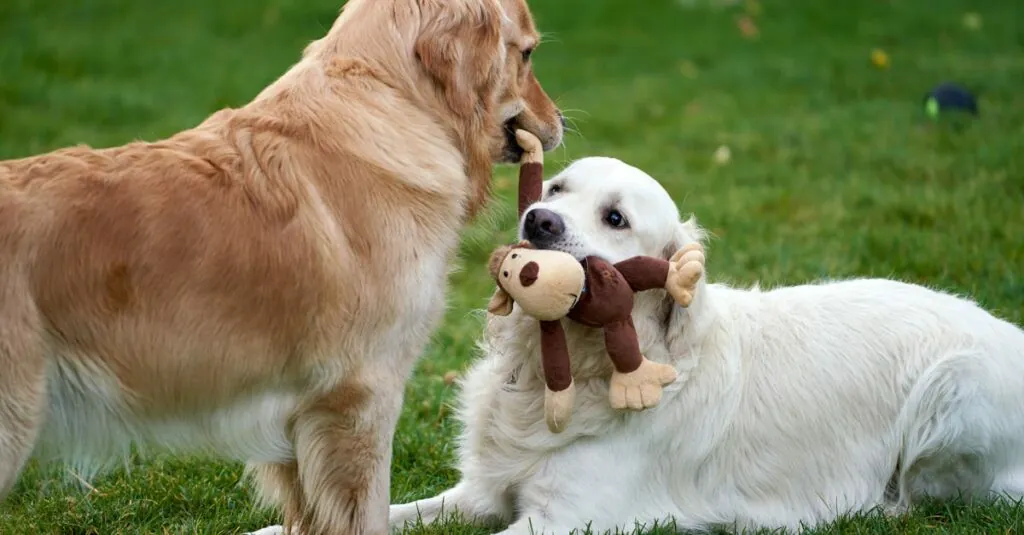Table of Contents
ToggleImagine a world where your dog can frolic freely without turning your yard into a mud pit. Enter artificial grass for dogs—where the only thing greener than your lawn is your pup’s happiness. This revolutionary solution not only keeps your yard looking pristine but also offers a soft, durable surface for those playful paws.
Overview of Artificial Grass for Dogs
Artificial grass for dogs provides numerous advantages for pet owners. It offers a durable and low-maintenance alternative to natural grass. This synthetic turf stays green and vibrant throughout the year, regardless of seasonal changes.
Hygienic properties make artificial grass a favorable choice. The material often includes antimicrobial treatments that reduce odor and bacteria buildup, ensuring a safer environment for dogs. Cleaning the surface becomes simple; pet owners can quickly rinse away waste and debris.
Many options cater to different aesthetic and functional requirements. Various textures and colors mimic natural grass while providing a comfortable play area. Pet owners can select styles that best suit their outdoor decor and their dog’s preferences.
In addition to hygiene, durability remains a significant benefit. High-quality artificial grass withstands heavy foot traffic and rough play, lasting years without fading or wearing down. This longevity means fewer replacements compared to natural grass, resulting in cost savings over time.
Environmental considerations also factor into the decision. Artificial grass eliminates the need for water, fertilizers, and pesticides, conserving resources while providing a clean surface for pets. Many products today are made from recycled materials, contributing to sustainable practices.
Pet owners often find artificial grass increases their pets’ enjoyment of outdoor spaces. Dogs can freely play, dig, and lounge on the surface without damaging the lawn. Families appreciate how this solution enhances outdoor areas, making them more usable for both pets and their owners.
Overall, artificial grass for dogs presents a practical and appealing option, combining aesthetics, convenience, and functionality into one innovative solution.
Benefits of Using Artificial Grass
Artificial grass offers numerous benefits for pet owners, enhancing outdoor spaces while ensuring a safe environment for dogs.
Durability and Maintenance
Durability stands out as a key advantage. This grass withstands heavy foot traffic and rough play, making it ideal for active dogs. Maintenance remains simple and hassle-free. Cleaning requires just a rinse to remove waste and debris, eliminating the need for mowing or watering. Unlike natural grass, artificial options resist fading and can last for years. Cost-effectiveness results from reduced maintenance efforts and longer lifespan, allowing pet owners to save money over time.
Comfort for Pets
Comfort plays a significant role in artificial grass’s appeal. This grass provides a soft surface, making it gentle on dogs’ paws while they play. Different textures come in various options, catering to individual preferences and sensitivity levels. Dogs enjoy the feel of the grass underfoot, leading to a more enjoyable play experience. The grass maintains a consistent temperature, remaining cooler on sunny days compared to natural surfaces. This characteristic encourages dogs to spend more time outdoors, promoting active play and overall well-being.
Types of Artificial Grass
Artificial grass offers various options tailored for dog owners. Different styles cater to different needs, ensuring pets enjoy comfort and safety.
Pet-Friendly Options
Pet-friendly artificial grass incorporates materials that prioritize safety. Products often use non-toxic, lead-free components, ensuring no harmful chemicals affect dogs. Many options feature antimicrobial treatments that reduce bacteria buildup, keeping the play area hygienic. Porous designs facilitate drainage, allowing urine and odors to dissipate easily. Various textures available can mimic natural grass feel, offering comfort underfoot for paws. Such options provide peace of mind for owners who want a safe environment for their furry friends.
Comparison with Natural Grass
When comparing artificial grass to natural grass, significant differences emerge. Artificial grass requires no water or fertilizers, drastically lowering maintenance burdens. Natural grass often suffers wear from active play but artificial grass withstands heavy foot traffic without damage. Cleaning natural grass can be challenging, but artificial options allow simple rinsing to remove waste. Additionally, aesthetics remain consistent with artificial grass, appearing lush year-round. Costs also favor artificial grass, as longevity and reduced upkeep contribute to overall savings.
Installation Process
Installing artificial grass for dogs involves careful planning and execution. Following these guidelines ensures an efficient setup that lasts.
Preparation Steps
Measure the area designated for the artificial grass. Accurate measurements prevent excess waste and ensure a good fit. Clear the space of debris, rocks, and existing grass to create a smooth surface. Proper drainage is crucial; consider installing a drainage system if needed. Dig down about three to four inches to accommodate a base layer, which will help with stability and prevent weeds.
Installation Tips
Begin rolling out the artificial grass, overlapping edges to prevent gaps. Use a utility knife to trim the pieces for a seamless look. Secure the grass using stakes or adhesive, focusing on the seams for added strength. Brush the grass fibers upright with a broom to enhance the appearance. Finally, regularly inspect the installation for any signs of wear or shifting, ensuring the grass maintains its integrity over time.
Care and Maintenance
Proper care and maintenance ensure artificial grass remains in excellent condition for dogs. Keeping the surface clean promotes a healthy play environment.
Cleaning Procedures
Cleaning artificial grass involves simple steps that keep it hygienic. First, pet owners should remove solid waste promptly. Next, rinsing the area with water helps eliminate odors and bacteria. For stubborn stains, mild soap can be used. A soft-bristle brush can assist in loosening debris. Periodically, a deep clean with a hose or power washer ensures thorough sanitation. Regular maintenance not only enhances appearance but also prolongs lifespan.
Longevity and Warranty
Longevity of artificial grass varies by product. Many high-quality options last 10 to 15 years with proper care. Selecting a product with a solid warranty provides peace of mind. Common warranties cover 8 to 15 years, ensuring durability against wear and UV fading. Understanding the terms within the warranty empowers buyers to make informed decisions. Regular attention to maintenance practices supports longevity and helps maximize the investment.
Artificial grass for dogs offers a practical solution for pet owners seeking a beautiful and functional outdoor space. Its durability and low maintenance make it an attractive alternative to natural grass. With easy cleaning processes and antimicrobial properties, pet owners can ensure a hygienic environment for their furry friends.
The comfort provided by artificial grass encourages dogs to enjoy their time outdoors while minimizing the risk of wear on their paws. Additionally, its environmental benefits contribute to resource conservation, making it a responsible choice for eco-conscious pet owners.
Investing in high-quality artificial grass not only enhances the aesthetics of a yard but also supports a healthier lifestyle for pets, allowing them to play freely without the concerns associated with traditional grass.







